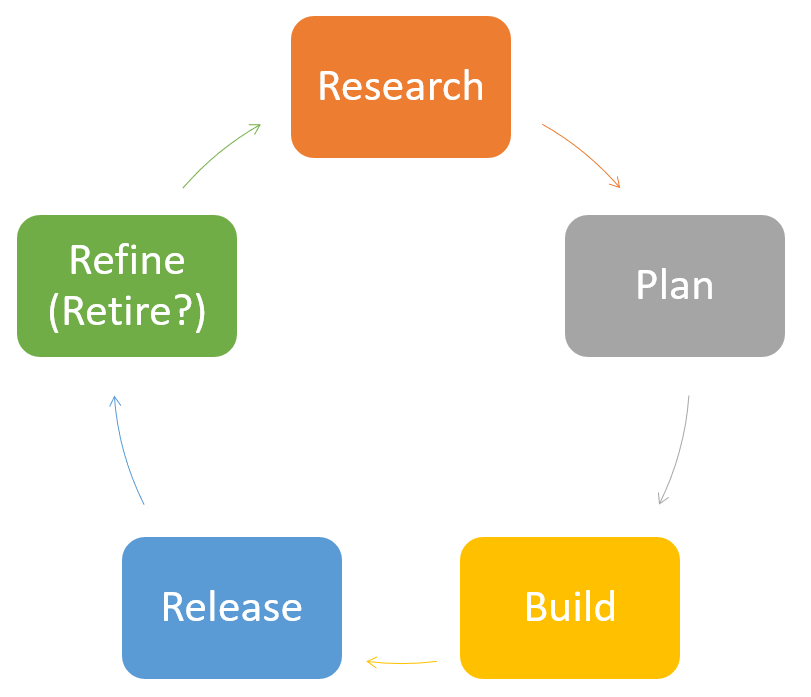Contents
Product Management
Introduction
Everything around us is a product (e.g. manufactured objects, designed software). A Product Manager is responsible to ensure that a product is correctly designed, built, tested and released.
Product Managers usually tends to work with 4 different type of personalities within their team: User Experience (design how the product should look and how the users will interact with it), Engineering (software, network, security, electrical), Quality Assurance (testing the product for possible defects/bugs) and Marketing (make sure customers know what the product does and how it can be valuable for them). Additionally, Product Managers might have to communicate with other external teams such as R&D, Finance, Legal, Public Relationships, Executives (investors) and users in order to plan the product developments.
Product vs Project management
These two different roles are related but they are not the same. The differences between these two roles can be summarised using the table below:
| Product Manager | Project Manager |
|---|---|
| Product managers make sure that what is made is useful and valuable | Project Managers make sure that what we are try to make, can be created |
| Users enjoy the product and find it useful | Determine schedules |
| Product integrates successfully with the external environment | Evaluate and manage resources |
The role of the product manager is to understand what the users need and turn that into specific features which can then be developed by the team. The project manager, focuses instead at scheduling the work which needs to be done, monitor the team performance and communicate back to the product manager.
Project Development Methodologies
Agile vs Waterfall
- Agile Development: the product is designed and built over multiple phases (sprint). During each phase developers work in order to add new features to the product (which can be either used internally or for the user). Each sprint is planned independently from one another. A roadmap is then created in order to structure all the different sprints which are used in order to complete the product. While working on finishing a sprint, the product manager also start planning for the details on the next spring (different springs can slightly overlap). This approach make possible to react quicker to possible changes in the scope of the project.
- Waterfall Development: all the product details are fully specified, documented and communicated before anything is built (the final product depends on everything working together perfectly). All the possible problems are addressed before the development is event started.
The Product Lifecycle
The development of a product can be summarised in the Product Lifecycle (Figure 1). At each stage, the following decision can be made:
- Research: What is the audience for the product, how big is the audience? Any possible development problem/issue? What extra value can the product add? In order to make assessments, qualitative and quantitative types of data are typically sourced either internally or externally from the organization.
- Plan: Define the project timeline, determine the key features, create the overall project plan and set an agreement with the stakeholders (e.g. through user stories for the product).
- Build: Build and test the features.
- Release: Make the product available to the customers (or just a beta or A/B testing version to gather feedback).
- Refine: Evaluate how the product is perceived by the market.
The cycle then restarts every time we decide to add new features to our product. At some point, we might then need to retire the product (e.g. deciding to move to a new version). When retiring a product we then need to make sure to provide support to the users to transit to a new/alternative version.
Figure 1: Product Lifecycle
Resources and References
Contacts
If you want to keep updated with my latest articles and projects follow me on Medium and subscribe to my mailing list. These are some of my contacts details:

